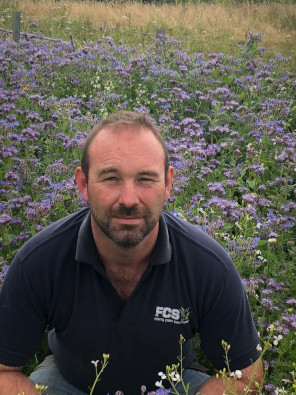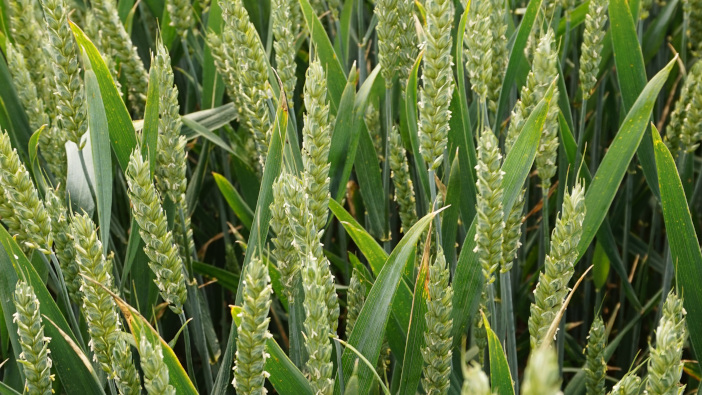Zander Hughes, who runs a farming and contracting business in Fife, farms across 320 hectares for a range of clients, and finds himself establishing crops in a range of conditions.
From early to late drilling, conventional establishment and minimum tillage, and varying soil fertility, his work puts most varieties to the test but he says that LG Skyscraper continues to be the stand-out performer.
He has grown the variety since it was launched five years ago, and this year it accounts for the entirety of his winter wheat area – around 130 hectares – most of which is first wheat after potatoes, vegetables, grass or spring barley.
“We’ve never had any problems with LG Skyscraper; we really like it as a variety. To this day, LG Skyscraper remains the variety that produced the biggest yield I’ve ever grown, at 14.5 t/ha in the year we first tried it.”
He added that while the variety didn’t quite reach that level last year, it still performed well, averaging 10.5 to 10.75 t/ha, with big grains, high quality and plenty of straw. This after conditions meant that T0 fungicides and a plant growth regulator could not be applied.
“That did put slightly more pressure on the T1 and T2 growth regulators in high fertility situations, but despite this, crops generally still stood really well.”

Succeeding in a tough year
Most of this year’s crop was drilling in good conditions, despite the weather extending the drilling window from the 1st of September through to mid-November. Zander said that he had no fears about later sowing due to the variety’s vigorous growth habit.
Seed rates were judged based on the drilling date and the conditions, with 375 seed/m2 sown at the lowest rate, and up to 525 seeds in the most challenging conditions.
“At the moment, there aren’t really any obvious differences between the early and late-sown crops. We’ve found that standing water on some fields – which is a new thing for us this year – has had more of an effect than drilling date.”
He added that generally, the crop looks well, with no obvious issues despite the ideal conditions for septoria and yellow rust. SDHI and triazole-based T1 and T2 fungicides will be used, building on a prothioconazole-based T0 applied earlier this spring, accompanied by trinexapac-ethyl and chlormequat growth regulators, and trace elements.
“Growth stages are slightly all over the place at the moment, even within the same field, so we’re hoping the T0 growth regulator will reduce the apical dominance of the main stems a bit, as they’re a lot further on than the tillers at this stage. We’ll also apply another growth regulator at T1, although decisions are taken on a field-by-field basis.”
While nitrogen is typically applied in three doses, Zander has opted for a little and often approach this year, with four applications of granular split roughly into 30-40-20-10%, totalling around 210kg/ha, although there are some variations.
Sticking with LG Skyscraper
Looking ahead to next season, Zander plans on sticking with LG Skyscraper, although he will put Limagrain’s new hard Group 4 LG Beowulf. He will also host a variety demonstration for the company, with 16 varieties sown.
“The demonstration is being held on one of our contract farms that hasn’t grown wheat for around 15 years. My initial plan was to go with LG Skyscraper on this farm, because it’s one we like and has done well for us, but there was some debate as to what variety would best suit the farm, hence hosting the trial here.”
As well as showcasing both Limagrain and competitor varieties, the trial will also demonstrate the impact of seed rates on four Limagrain wheats.
For more information go to www.lgseeds.co.uk


